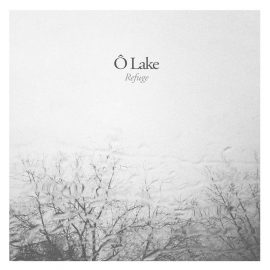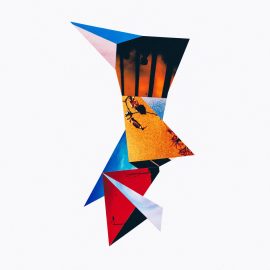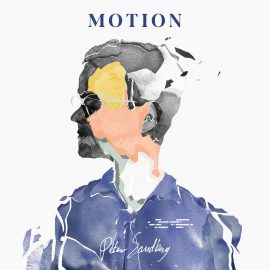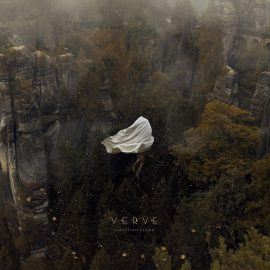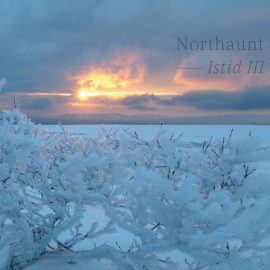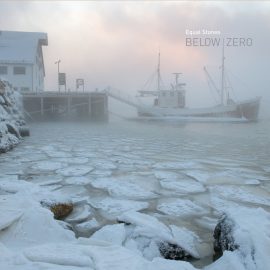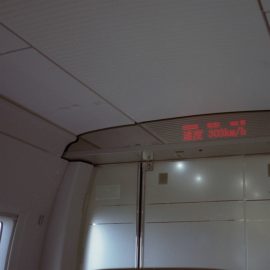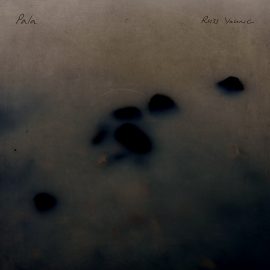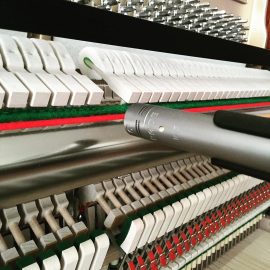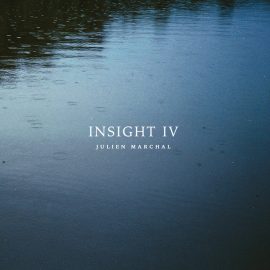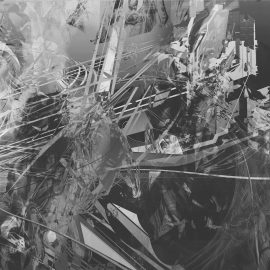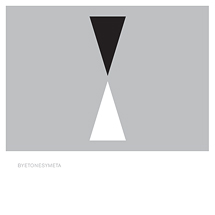 Byetone Symeta Raster-Noton Yes, I know that it’s already May, and I’m still reviewing albums from past October, but I just got a brand new pair of headphones, so I must spin them around the block – can you blame me? And what better way to experience the range of frequencies then with a handful of surgically crafted releases from Raster-Noton? The digital treats on Symeta, from Chemnitz (German) based Olaf Bender is a perfect way to start the trip. As a co-founder of the cutting edge German label, together with Frank Bretschneider and Carsten Nicolai, Bender’s Byetone project first appeared on the label in 1999, with an Untitled EP. In 2008 Byetone’s full length release, Death Of A Typographer turned more than a few heads, thanks in part to the hit single, Plastic Star. With this followup Bender continues the explorations the project for the label. The seven tracks on Symeta glitch, tweak and bounce through the atmosphere with a driving beat, repetitive patterns, and intricate layers of sound. The only organic matter present in the music is the approach with which it was composed – the album was produced within the context of a live performance. Edging close to a statically stenciled rhythm, the pieces on Symeta could easily be heard in clubs, mixed in with the hypnotic cuts of techno or electro genres. The saw-tooth industrial sounding bass drills push the boundaries of any sound system, and make a perfect demo disc for testing out a pair of speakers or headphones prior to the purchase in a store. Trust me, it’s fun!
|
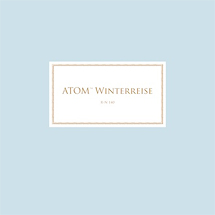 Atom™ Winterreise Raster-Noton It is impractical for me to go over Uwe Schmidt‘s discography. You may attempt to cover the span of his output yourself, by starting with his 1993 releases as Atom Heart on Fax label, then covering his late 90s latin electro output as Señor Coconut, and finally arriving at his latest moniker, Atom™. Schmidt’s releases on his very own imprint, Rather Interesting, explore the abstract caverns of electronic music, finally landing the project on Raster-Noton, with 2009 Liedgut. The music unraveled in Liedgut yielded a series of photographs within the contextual framework of the album. The series was exhibited in Tokyo and Frankfurt in 2011 under the name Winterreise. The sonic accompaniment on the album is the audio soundtrack to these photographs. Although the glitchy and static noise on the album may at first appear purely digital and cold, there is a touch of classicism in the work, with a nod to Franz Schubert‘s same titled song cycle for voice and piano. “With a balance between the romantic and the scientific, this album evokes, not just accompanies the visual aspect of the Winterreise project in a perfect manner, by painting grainy sonic images that visualize the tradition and the future of the romantic subconscious.” The CD edition of the album comes with postcards depicting the exhibited images, so make sure to get a physical copy directly from the label. There’s also a limited edition of original art prints of the Winterreise photos, available at the r-n shop. Hauntingly beautiful. Music for the ghost in the machine…
|
|
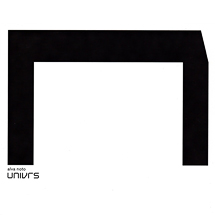 Alva Noto Univrs Raster-Noton You can’t talk about Raster-Noton and not mention Carsten Nicolai. The Chemnitz (Germany) based label boss (along with Olaf Bender and Frank Bretschneider), has a few ongoing series running for the last couple of years. In 2007, Nicolai kicked off the Xerrox series in which he examines the concept behind digital reproduction of sound. There’s also the Transall series, experimenting with rhythmically oriented sine tones and white noise. The work on Univrs develops the concepts originally explored on Unitxt (2008) – processing of single unit patterns and information stored in text. On this second installment in the series Nicolai expands his focus to broad source of data, universal language, if you will. French voice-artist Anne-James Chaton appears at the center of the album, on “Uni Acronym” reciting 208 three-letter acronyms in alphabetical order to tightly structured Notoesque signature rhythm0 The video for this amazing track can be seen here. It would be amazing to catch an audio-visual performance of Univrs, as it features real-time manipulation of software-generated test images by the audio signals, which are then fed through a custom hardware box that triggers the video signals according to the value of the audio signal. Never repetitive, but not necessarily random. As always, Nicolai manages to neatly fold zeros and ones into art, stripping away the binary, cold, and sterile fragments, until the digital signals transform into analog waveforms, that we, humans, seem to call ‘music’. This is a must for any serious collector of Raster-Noton’s catalog.
|
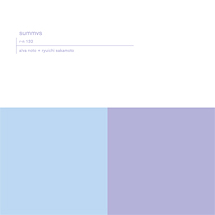 Alva Noto + Ryuichi Sakamoto Summvs Raster-Noton The only other greatest collaboration between Ryuichi Sakamoto and his contemporary electronic musicians besides Christian Fennesz (and as I have recently witnessed live, Taylor Deupree), is his ongoing critically acclaimed work with Alva Noto. The duo first got together in 2002 for their worldwide lauded Vrioon release. Three years later Insen fluttered the modern classical and minimal glitch scenes alike, only to be followed up with Ensemble Modern collaboration on _utp in 2008. This Virus series concludes with a final installment of Summvs, in which Noto and Sakamoto continue to explore the sparse electronic micro rhythms layered with abstract glitchy piano notes. I only say “final” because Raster-Noton published a collector’s boxset that features all of the above four full-lengths, plus a Revep EP! Besides Noto and Sakamoto’s work showcased at its best, there are a few more surprises on the album. The “microon” tracks contain recordings of a 16th tone interval tuning piano – “piano metamorfoseador en dieciseisavos de tono”. The album also features two covers of the track “By This River” originally composed by Brian Eno, Dieter Moebius, and Hans-Joachim Roedelius in 1977. “In their instrumental versions of the song Nicolai and Sakamoto create and investigate the song’s appeal in both normal speed and slow motion.” The title of the album derives from Latin “summa” (sum) and “versus” (towards) hinting at an overall wrap up of a collaborative project. And although I refuse to accept this release as their, I must admit that it is their very best!
|
|
